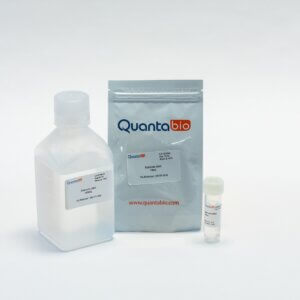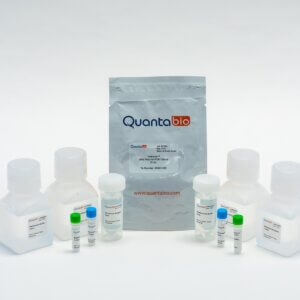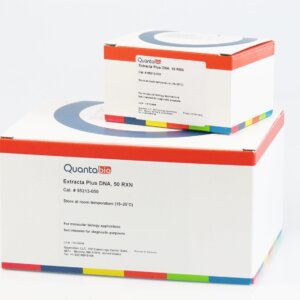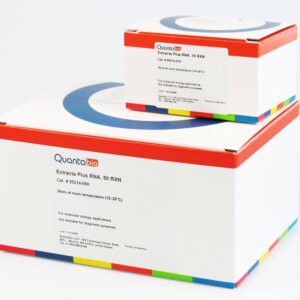DNA and RNA extraction – Optimized for your workflow
Quantabio extraction reagents provide a simplified and cost-effective alternative to traditional nucleic acid (NA) purification methods and are optimized to work in series with
Quantabio ToughMix reagents.
Our products cover a wide range of sample types and downstream applications.
The below table provides a brief summary to help you decide which solution is best suited for your experiments.
| Extracta DNA Prep for PCR | Extracta DBS | Extracta Plus DNA | Extracta Plus RNA | |
|---|---|---|---|---|
| Sample Type | Cells, tissues, buccal swabs, saliva, tail snips, ear punches, hair |
Dried blood spots | Fresh or frozen tissue, cells, blood, bacteria | Fresh or frozen tissue, cells, blood |
| Analysis | PCR, qPCR | PCR, qPCR, Sanger Sequencing, NGS |
PCR, qPCR, Sanger Sequencing, NGS |
RT-PCR, RT-qPCR, Sanger Sequencing, NGS |
| Ideal for | Rapid isolation | Samples spotted on collection cards |
Sensitive downstream applications |
Sensitive downstream applications |
| Packaging (Rxns/Units) | 1 x 10 mL 1 x 500 mL |
2.5 mL 25 mL 250 mL |
10 rxn 50 rxn |
10 rxn 50 rxn |
Sample Preparation Products
Showing all 4 results
-
Extracta DBS
Extracta DBS is a ready-to-use DNA extraction reagent for rapid and efficient recovery of PCR-ready DNA from dried blood spots (DBS) on Guthrie cards or Whatman 903 filter paper. This patented single-solution process produces DNA eluates that are substantially free… -
Extracta DNA Prep for PCR
Extracta DNA Prep for PCR is a two-component reagent kit for rapid extraction of PCR-ready genomic DNA from a variety of tissues. Samples are processed in less than 30 minutes with minimal hands-on time and technical skill. Extracted genomic DNA… -
Extracta Plus DNA
Extracta Plus DNA kits offer rapid purification of total DNA from a variety of sample sources. Genomic, mitochondrial and pathogenic DNA can be collected from fresh/frozen animal cells, tissue, blood, and bacteria. The Extracta Plus Spin Column workflow enables simultaneous… -
Extracta Plus RNA
The Extracta Plus RNA kit provides rapid extraction and purification of RNA from cultured human or animal cells and from various tissue samples. The Extracta Plus spin column workflow enables simultaneous processing of multiple samples in 25 mins to yield…




